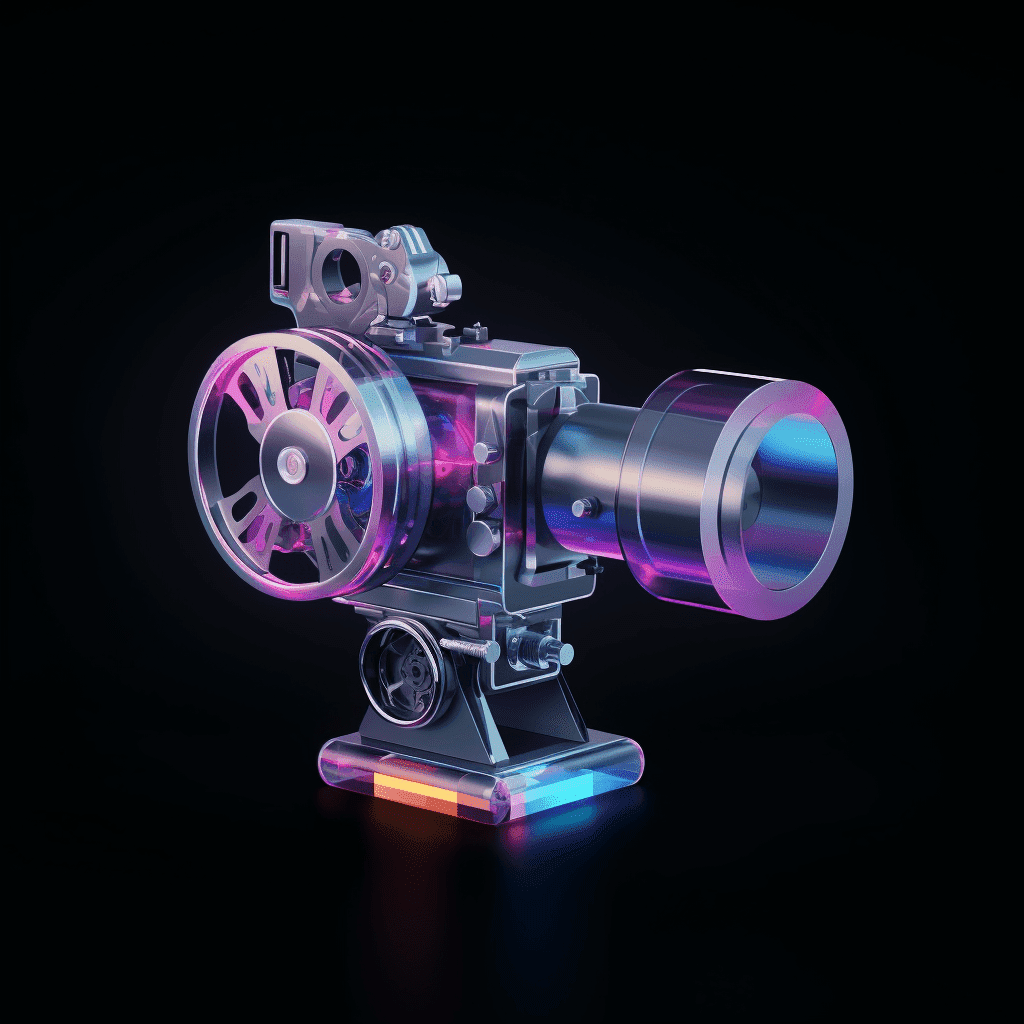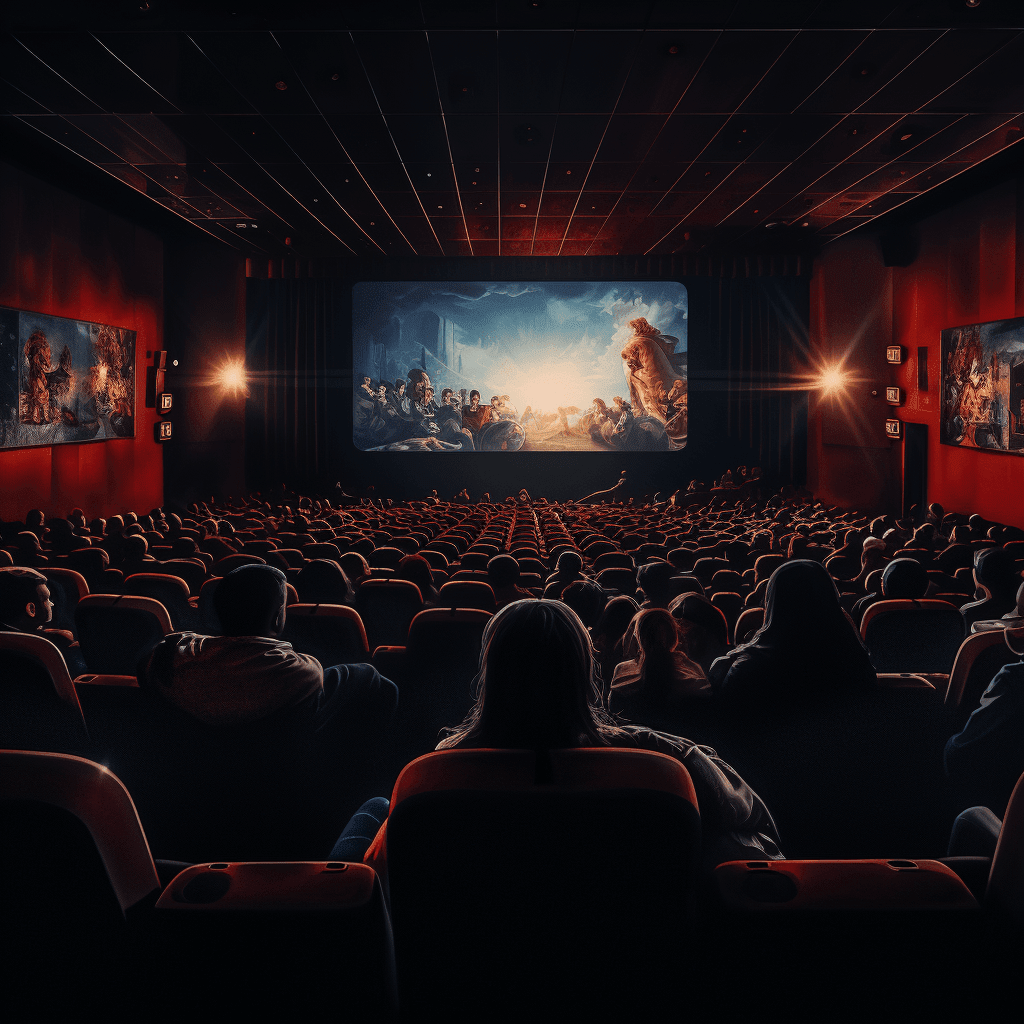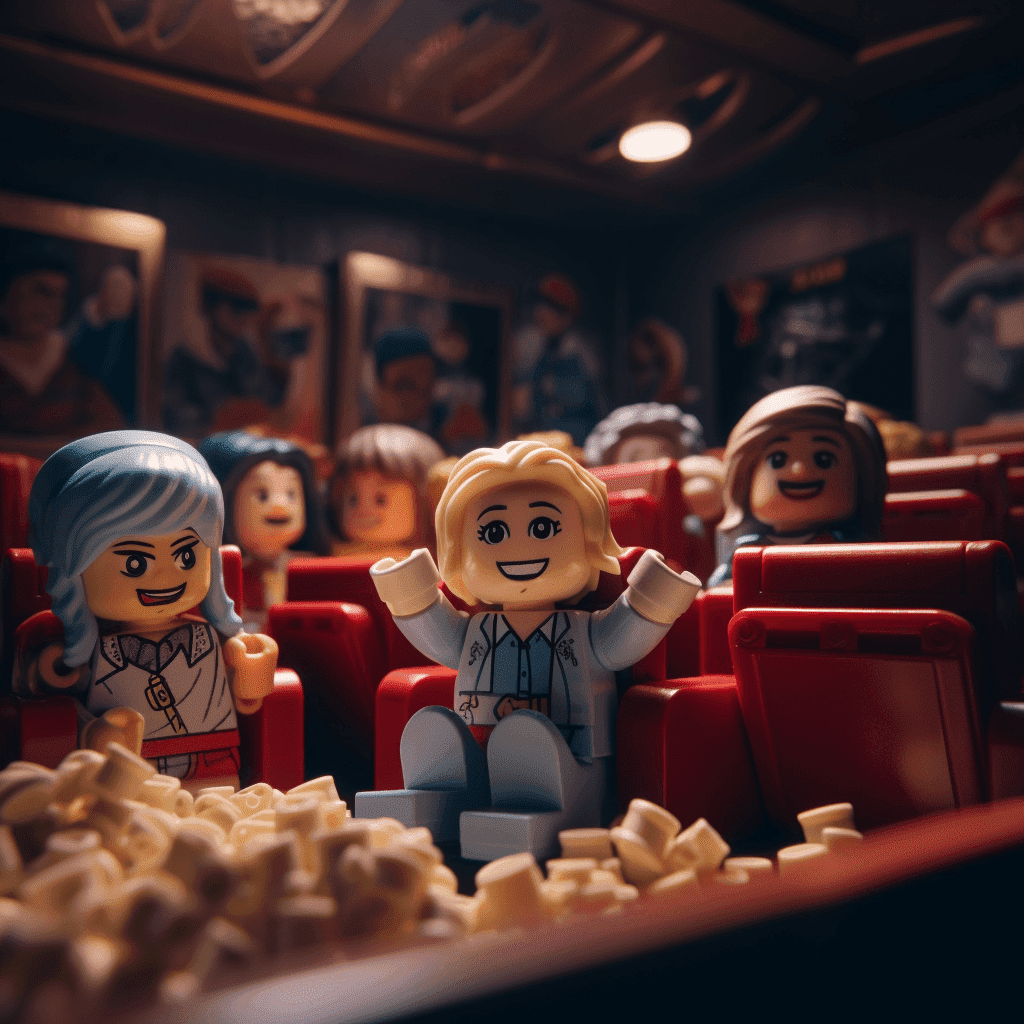
What's After the Blog?
Independent Films
A Look into the World of Independent Animation
Explore the rich and diverse world of independent animation, where creativity meets storytelling in a realm of artistic freedom and innovation.
August 7, 2024

A Look into the World of Independent Animation
Introduction
The world of independent animation is a realm where creativity and storytelling collide in the most vibrant and unexpected ways. Distinct from the high-budget productions of major studios, independent animation thrives on artistic freedom, often exploring unconventional narratives and pioneering unique visual styles. This sector of animation has been a fertile ground for animators who want to tell personal, sometimes unconventional stories, without the constraints of commercial objectives or mainstream expectations.
Independent animation’s journey is marked by a rich history of innovation and artistic exploration. From the early days of experimental shorts to the contemporary era of feature-length masterpieces, independent animators have continually pushed the boundaries of what animation can achieve. Films like “The Triplets of Belleville” and “Waltz with Bashir” have challenged audiences’ perceptions of animation, proving that the medium can convey complex, mature themes with depth and nuance. These films, and others like them, stand as testaments to the power of animation when wielded by artists unfettered by commercial constraints.
Defining Independent Animation
At its core, independent animation is defined by its autonomy from the major film studios, granting creators the freedom to explore their artistic visions fully. This independence often results in films that are deeply personal, reflective of the animators’ own experiences, thoughts, and cultural backgrounds. Independent animation can vary widely in terms of style, from traditional hand-drawn techniques to stop-motion, and even cutting-edge digital animation.
One of the most striking features of independent animation is its ability to tell diverse and often untold stories. Films like “Persepolis”, based on Marjane Satrapi’s autobiographical graphic novel, offer a window into personal and cultural narratives that might otherwise remain unheard. Similarly, Hayao Miyazaki’s “Spirited Away” presents a rich tapestry of cultural mythology, woven into a compelling narrative that resonates universally.
The freedom of independent animation also allows for experimentation with visual styles. This is evident in films like “Loving Vincent”, which utilized thousands of hand-painted frames in the style of Vincent van Gogh, creating a visual experience unlike any other. Another notable example is “Anomalisa”, a film that employed intricate stop-motion techniques to explore the subtleties of human interaction and emotion.
Independent animation’s distinctiveness lies not only in its storytelling and visual experimentation but also in its ability to connect with audiences on a personal level. Free from the need to appeal to mass markets, these films can delve into niche subjects, explore avant-garde themes, and present unique perspectives, all of which contribute to the rich tapestry of global cinema.
The Creative Process in Independent Animation
The creative process in independent animation is markedly different from that of mainstream studio productions. It often starts with a deeply personal vision or a story that the animator feels compelled to tell. This process can be both liberating and challenging, as independent animators usually work with more limited resources compared to large studios. However, this constraint often fuels creativity, pushing animators to think outside the box and develop innovative techniques to bring their visions to life.
Independent animators tend to have complete control over every aspect of their films, from the storyline to the animation style. This total control allows for a more intimate and detailed approach to storytelling. For example, in “My Life as a Zucchini”, director Claude Barras used unique character designs and stop-motion animation to tell a poignant story about love and loss. Similarly, “Song of the Sea” by Tomm Moore used a distinct, hand-drawn style inspired by Irish folklore to weave a narrative that is both visually and emotionally rich.
In bringing their unique visions to life, independent animators often wear multiple hats, working not just as directors, but also as writers, animators, and sometimes even composers. This hands-on approach can be seen in works like “It’s Such a Beautiful Day” by Don Hertzfeldt, which showcases a distinctive, minimalist style coupled with a deeply existential narrative, reflecting the animator’s personal touch in every frame.
Notable Independent Animators and Their Work
The world of independent animation is filled with talented animators who have left an indelible mark on the industry with their innovative and thought-provoking work. Hayao Miyazaki, co-founder of Studio Ghibli, is renowned for his richly imaginative films that combine captivating storytelling with stunning visuals. His works, including “Spirited Away” and “Princess Mononoke”, are not only visually breathtaking but also deeply imbued with themes of environmentalism and humanism.
Another influential figure in independent animation is Nick Park, the creator of Wallace and Gromit. Park’s distinctive use of claymation and his quirky, endearing characters have earned him a special place in the hearts of animation enthusiasts. His films, like “The Wrong Trousers” and “A Close Shave”, are exemplary for their unique style, humor, and warmth.
Marjane Satrapi, with her critically acclaimed film “Persepolis”, brought a powerful autobiographical story to life through stark black-and-white animation. Her film is a masterful blend of personal narrative and historical commentary, showcasing the potential of animation to tackle serious and complex themes.
These animators, among many others, demonstrate the vast possibilities of independent animation. They remind us that animation is not just a medium for children’s stories but a powerful form of artistic expression capable of conveying a wide range of human experiences and emotions.
The Role of Technology in Independent Animation
Technology plays a pivotal role in the evolution of independent animation, offering a spectrum of tools that empower animators to bring their visions to life with greater creativity and efficiency. The advent of affordable and accessible animation software has democratized the animation process, allowing independent animators to produce work that rivals the quality of larger studios. Programs like Adobe After Effects, Toon Boom Harmony, and Blender provide powerful platforms for animators to explore different styles and techniques, from 2D hand-drawn animations to 3D modeling.
The rise of digital animation tools has also opened the door for a more experimental approach to animation. Independent animators are utilizing these technologies to push the boundaries of traditional animation, experimenting with mixed media, interactive elements, and even virtual reality. For instance, the short film “Gloomy Eyes” utilized VR technology to immerse viewers in a uniquely animated world, showcasing how technology can expand the narrative possibilities of animation.
Furthermore, the internet and social media platforms have become vital for independent animators to showcase their work, reach wider audiences, and even crowd-fund their projects. Platforms like Vimeo, YouTube, and Kickstarter have given rise to a new generation of animators whose work might never have seen the light of day in the pre-digital era. This online presence not only provides visibility but also creates communities where animators can collaborate, share ideas, and inspire each other.
Balancing Fidelity to Source Material with Cinematic Innovation
Independent animation often involves adapting existing material, such as books, comics, or real-life events, into animated form. One of the key challenges in this process is striking a balance between staying true to the source material and introducing cinematic innovation. This balance is crucial in maintaining the essence of the original work while also taking advantage of the unique opportunities that animation provides.
Some independent animators choose to adhere closely to the source material, using animation to bring to life the visuals and narratives as they are imagined in the original work. An excellent example of this approach is the adaptation of “The Tale of the Princess Kaguya” by Isao Takahata, which closely mirrors the style and story of the ancient Japanese folktale.
On the other hand, some animators use the source material as a starting point for creative interpretation, adding new layers of meaning or experimenting with different animation styles. For example, “Loving Vincent,” while based on the life and works of Vincent van Gogh, employed a unique oil-painting animation technique to reimagine the artist’s story, offering a fresh perspective on his life and art.
In either approach, the key is for animators to leverage the strengths of animation to enhance the storytelling, whether it’s through vivid visual expressions, imaginative world-building, or the ability to depict abstract concepts and emotions. The flexibility of animation makes it an ideal medium for adapting a wide range of source materials, providing endless possibilities for independent animators to explore and express their creative visions.
Explore a variety of independent animations and their creative processes on ATM.
The Cultural Impact of Independent Animation
Independent animation has made a significant cultural impact, often bringing diverse and underrepresented stories to the forefront. These animations have the power to address complex themes such as identity, social injustice, and cultural heritage, providing a platform for voices that might otherwise go unheard in mainstream media. For instance, “Persepolis,” Marjane Satrapi’s autobiographical tale, presents a poignant look at life in post-revolutionary Iran, offering audiences a personal perspective on historical events.
The influence of independent animation extends into the realm of education and awareness, where animations are used as tools to discuss and explain intricate social and psychological concepts. Films like “Anomalisa” or “Waltz with Bashir” delve into the complexities of human emotions and memories, using the medium’s inherent flexibility to depict abstract ideas in a tangible form.
Furthermore, independent animation often challenges the conventional aesthetics of mainstream animation, introducing audiences to a variety of artistic styles and storytelling techniques. This exposure to diverse artistic expressions enriches the cultural landscape, encouraging viewers to appreciate different forms of artistic creativity and narrative storytelling.
The Future of Independent Animation
Looking towards the future, independent animation is poised to continue its trajectory of growth and innovation. Emerging technologies like augmented reality (AR) and virtual reality (VR) offer new frontiers for independent animators to explore, potentially creating even more immersive and interactive storytelling experiences. As these technologies become more accessible, we can expect to see a surge in animations that push the boundaries of traditional storytelling.
Additionally, the growing support for independent animation through film festivals, online platforms, and crowd-funding campaigns indicates a bright future for the genre. These avenues not only provide financial support but also help in building a community of animators and enthusiasts who share a passion for this unique form of storytelling.
In conclusion, the world of independent animation is a vibrant and dynamic field, continually evolving and pushing the limits of artistic expression. It stands as a testament to the power of animation as a medium for storytelling, capable of captivating audiences with its visual splendor and narrative depth.
Discover the evolving trends and future potential of independent animation on ATM.
Conclusion
The exploration into the world of independent animation reveals a diverse and vibrant landscape where creativity and storytelling flourish without bounds. These films and their creators embody the spirit of artistic freedom, often bringing to life stories and visuals that challenge, inspire, and provoke thought. Independent animation stands as a powerful medium for personal expression, cultural representation, and artistic innovation. It continues to push the boundaries of traditional filmmaking, offering audiences around the world new ways to experience and interpret the art of storytelling.
As this genre evolves, it remains an essential part of the cinematic tapestry, reminding us of the limitless possibilities of animation beyond mainstream conventions. Independent animation not only entertains but also educates, enlightens, and stirs the imagination, making it an invaluable component of the global film industry. Its future, bright and promising, is sure to bring even more groundbreaking works that will captivate and resonate with audiences for generations to come.
Explore More on ATM
For those intrigued by the captivating world of independent animation and eager to explore more, ATM offers a wealth of information. Whether you’re interested in discovering hidden gems in the realm of animation or looking to delve deeper into the nuances of various cinematic genres, ATM is your go-to source. Our platform not only provides insights into end credit scenes but also offers comprehensive descriptions, ratings, and summaries of a wide array of films. Visit our blog for more engaging content and discussions on the ever-evolving world of cinema, including the fascinating realm of independent animation.
Continue reading

What's After the Movie?
Not sure whether to stay after the credits? Find out!
Check out our other apps:
Actors
Companies
Latest Movies
© 2025 What's After the Movie?. All rights reserved.



